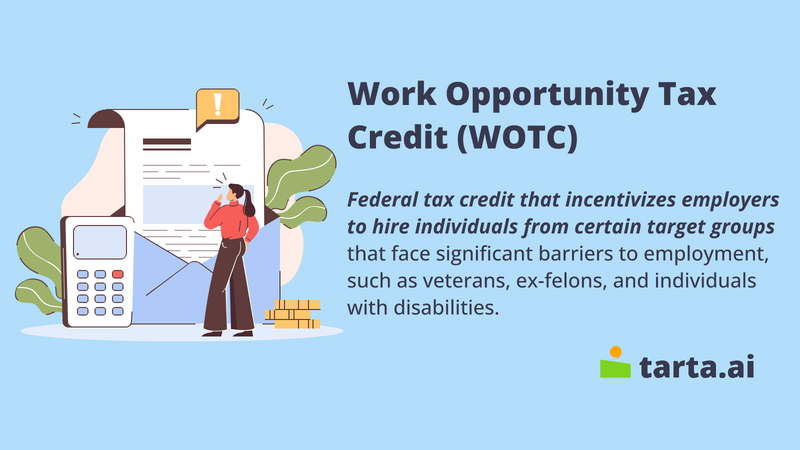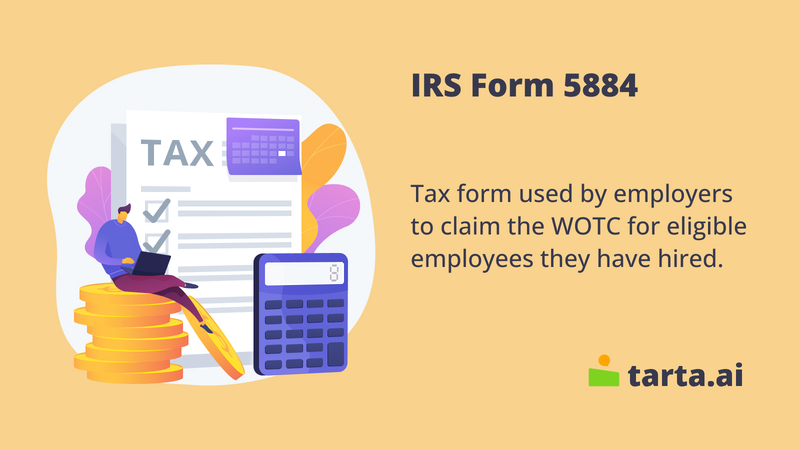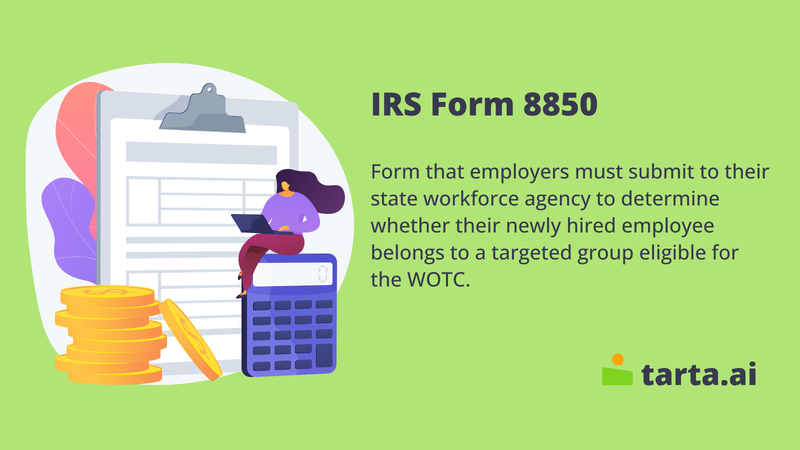Understanding the Benefits of the Work Opportunity Tax Credit for Employers
The Work Opportunity Tax Credit (WOTC) is a federal tax credit that incentivizes employers to hire individuals from specific target groups that face barriers to employment. The credit provides a tax benefit to employers who hire individuals from these groups, and can help offset the costs of hiring and training new employees.

For employers, WOTC can be a valuable tool for reducing their tax burden, improving their bottom line, and supporting their hiring efforts. By taking advantage of the credit, employers can save money on their federal tax bill while also gaining access to a diverse pool of qualified candidates who may have otherwise been overlooked.
This article will explore the benefits of the Work Opportunity Tax Credit for employers, including how it can help reduce federal taxes, improve employee retention rates, enhance business performance, boost diversity and inclusion, and provide a competitive advantage. We will also cover the eligibility requirements for the credit, how it is calculated, and the procedures for employers to apply for and claim the credit. Finally, we will provide recommendations for employers to leverage WOTC and discuss the future outlook for the credit.
Eligibility for WOTC
To be eligible for the Work Opportunity Tax Credit, individuals must belong to one of several target groups that face barriers to employment. These groups include:
- Temporary Assistance for Needy Families (TANF) recipients
- Veterans
- Ex-felons
- Designated community residents
- Vocational rehabilitation referrals
- Supplemental Nutrition Assistance Program (SNAP) recipients
- Supplemental Security Income (SSI) recipients
- Long-term unemployed individuals
- Summer youth employees
Fact:
According to the Department of Labor, approximately 2.4 million workers have been hired through the Work Opportunity Tax Credit program since its inception in 1996.
In addition to belonging to one of the target groups, individuals must meet certain criteria to be eligible for the credit. The specific criteria vary by group, but generally include:
- Being hired within one year of the date they last received assistance or were released from prison
- Working a minimum number of hours (usually 120 or 400 hours)
- Being paid a minimum amount of wages during their first year of employment
- Not being related to the employer
To claim the credit, employers must obtain certification that the employee is a member of a target group and meets the eligibility criteria. This certification can be obtained through several methods, including pre-screening and certification by a state employment agency or a designated local agency. Employers must also obtain written verification of the employee's eligibility from the employee or the agency that provided the certification.
Benefits of WOTC for Employers
Benefit | Description |
Reduction in Federal Taxes | The credit can provide up to $9,600 per eligible employee, which can be applied to reduce the employer's federal tax liability. This can help offset the costs of hiring and training new employees, and can provide a significant financial benefit for employers. |
Improvement in Employee Retention Rates | By hiring individuals from target groups, employers may be able to tap into a pool of dedicated, hard-working employees who are often overlooked in the hiring process. These employees may be more likely to stay with the company long-term, reducing turnover and the costs associated with recruiting and training new employees. |
Enhancement of Business Performance | By hiring individuals from diverse backgrounds and with unique skills and experiences, employers can bring new perspectives and ideas to the workplace. This can lead to increased innovation, improved problem-solving, and greater productivity. |
Boosting Diversity and Inclusion | By hiring individuals from target groups, employers can increase the representation of underrepresented groups in their workforce, leading to a more diverse and inclusive workplace. This can lead to a range of benefits, including improved employee morale, better decision-making, and a more positive company culture. |
Competitive Advantage | By leveraging the credit to hire top talent from target groups, employers can gain access to a pool of qualified candidates who may have been overlooked by other companies. This can give employers a competitive edge in the marketplace, helping them to attract and retain top talent and grow their business over time. |
Calculation of WOTC
The maximum credit per eligible employee under the Work Opportunity Tax Credit varies based on the employee's target group and the number of hours they work. For most target groups, the credit is equal to 25% of the employee's first-year wages, up to a maximum credit of $2,400. However, for certain target groups, such as disabled veterans and long-term TANF recipients, the credit can be as high as 40% of the employee's first-year wages, up to a maximum credit of $9,600.
To claim the Work Opportunity Tax Credit, employers must complete IRS Form 5884 and include it with their annual tax return. Employers must also obtain certification that the employee is a member of a target group and meets the eligibility criteria, and obtain written verification of the employee's eligibility from the employee or the agency that provided the certification.

If the Work Opportunity Tax Credit exceeds the employer's federal tax liability for the year, the excess credit can be carried forward for up to 20 years or carried back for one year. This can provide additional flexibility for employers who are unable to use the entire credit in the year it is earned.
The Work Opportunity Tax Credit may interact with other federal tax credits, such as the Empowerment Zone Employment Credit and the Indian Employment Credit. Employers should carefully review the eligibility criteria and requirements for each credit to determine whether they can take advantage of multiple credits for the same employee.
Implementation of WOTC
To apply for the Work Opportunity Tax Credit, employers must complete IRS Form 8850, the "Pre-Screening Notice and Certification Request for the Work Opportunity Credit." This form must be submitted to the state workforce agency within 28 days after the eligible employee begins work.

Employers must submit Form 8850 to the state workforce agency within 28 days after the eligible employee begins work. In addition, employers must request certification from the appropriate agency within 28 days after the eligible employee is hired. Failure to meet these deadlines may result in the employer being unable to claim the credit for the eligible employee.
Employers must maintain appropriate documentation to support their claim for the Work Opportunity Tax Credit. This includes documentation of the employee's eligibility, certification from the appropriate agency, and verification of the employee's eligibility. Employers should retain this documentation for at least three years after the date the tax return claiming the credit is filed.
Employers who claim the Work Opportunity Tax Credit must comply with reporting and record-keeping requirements. This includes submitting Form 5884 with their annual tax return, reporting the amount of credit claimed, and maintaining appropriate documentation to support their claim. Employers must also be prepared to provide documentation and information to the IRS upon request. Failure to comply with these obligations may result in penalties and the loss of the credit.
The Work Opportunity Tax Credit offers significant benefits for employers who hire individuals from target groups that face significant barriers to employment. These benefits include a reduction in federal taxes, improvements in employee retention rates, enhancements in business performance, the promotion of diversity and inclusion, and a competitive advantage in the labor market.
Employers can leverage the Work Opportunity Tax Credit by identifying eligible employees and completing the necessary certification and verification procedures. Employers can also work with state workforce agencies and other partners to identify eligible candidates and streamline the application process. Additionally, employers can invest in training and support programs to help eligible employees succeed in the workplace and maximize the benefits of the credit.
The Work Opportunity Tax Credit has been in place since 1996 and has been extended numerous times. While the credit has faced criticism for its complexity and the potential for fraud and abuse, it remains a valuable tool for employers seeking to hire and retain qualified employees from target groups. As the labor market continues to evolve, the Work Opportunity Tax Credit is likely to remain a key policy tool for promoting employment and economic opportunity for all.
- The Work Opportunity Tax Credit is a federal tax credit offered to employers who hire individuals from target groups that face significant barriers to employment.
- Eligible employees must meet specific criteria, and employers must complete the necessary certification and verification procedures to claim the credit.
- The benefits of the Work Opportunity Tax Credit include a reduction in federal taxes, improvements in employee retention rates, enhancements in business performance, the promotion of diversity and inclusion, and a competitive advantage in the labor market.
- Employers can leverage the credit by identifying eligible employees, working with state workforce agencies and other partners, investing in training and support programs, and complying with reporting and record-keeping requirements.
- The Work Opportunity Tax Credit is likely to remain a key policy tool for promoting employment and economic opportunity for all in the future.
FAQ
Who is eligible for the Work Opportunity Tax Credit?
Individuals who belong to one of several target groups that face significant barriers to employment are eligible for the Work Opportunity Tax Credit. These groups include, but are not limited to, individuals receiving Temporary Assistance for Needy Families (TANF), veterans, ex-felons, individuals with disabilities, and other groups facing barriers to employment.
Is the Work Opportunity Tax Credit a permanent program?
No, the Work Opportunity Tax Credit is subject to policy changes and updates, and has been extended multiple times, most recently through December 31, 2025, as part of the Consolidated Appropriations Act, 2021.
How does the Work Opportunity Tax Credit benefit employers?
The Work Opportunity Tax Credit provides a reduction in federal taxes, improvements in employee retention rates, enhancements in business performance, the promotion of diversity and inclusion, and a competitive advantage in the labor market.
What are the reporting and compliance requirements for the Work Opportunity Tax Credit?
Employers must comply with reporting and record-keeping requirements to claim and maintain the Work Opportunity Tax Credit. This includes submitting appropriate documentation and records to state workforce agencies and the Internal Revenue Service (IRS).